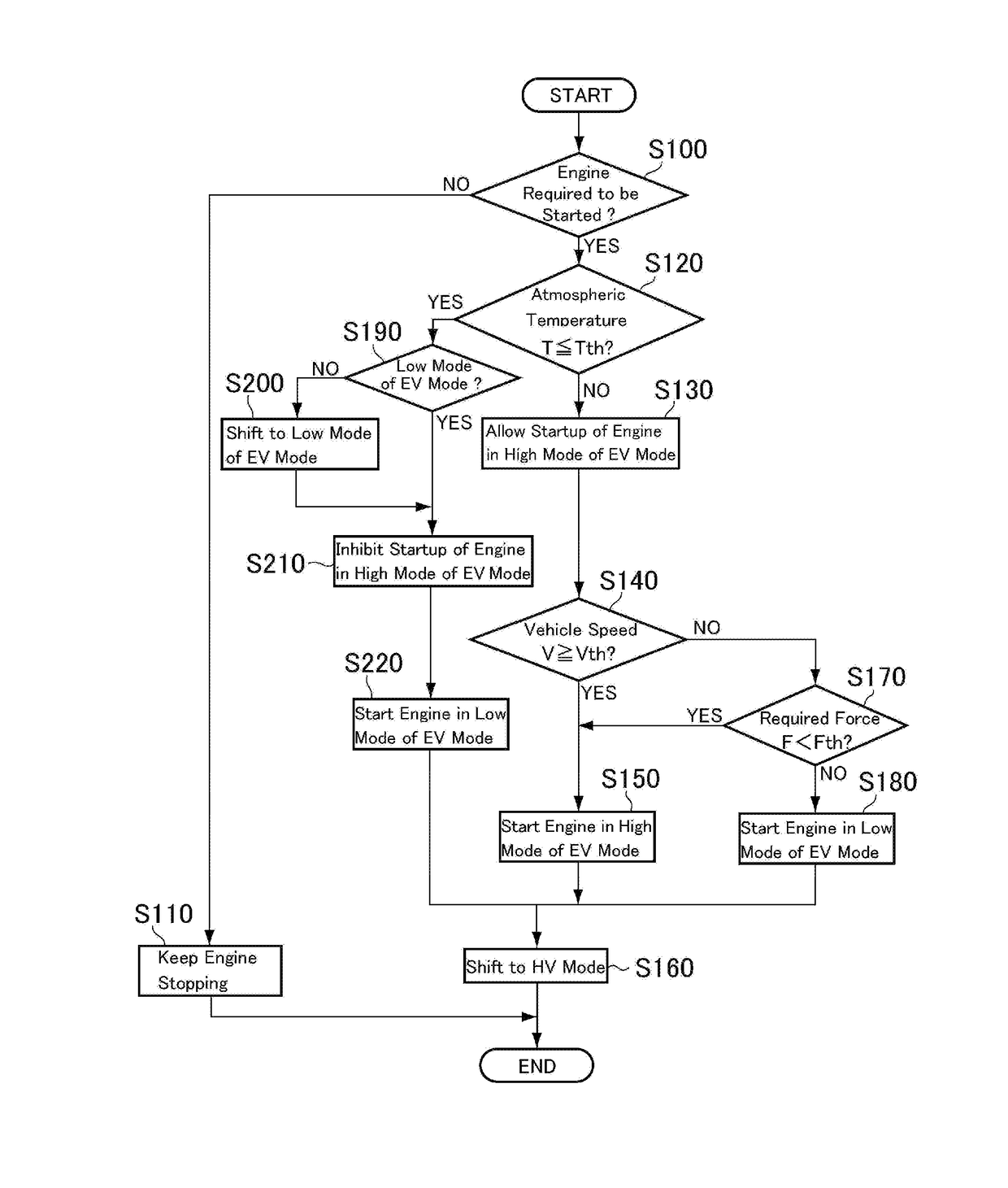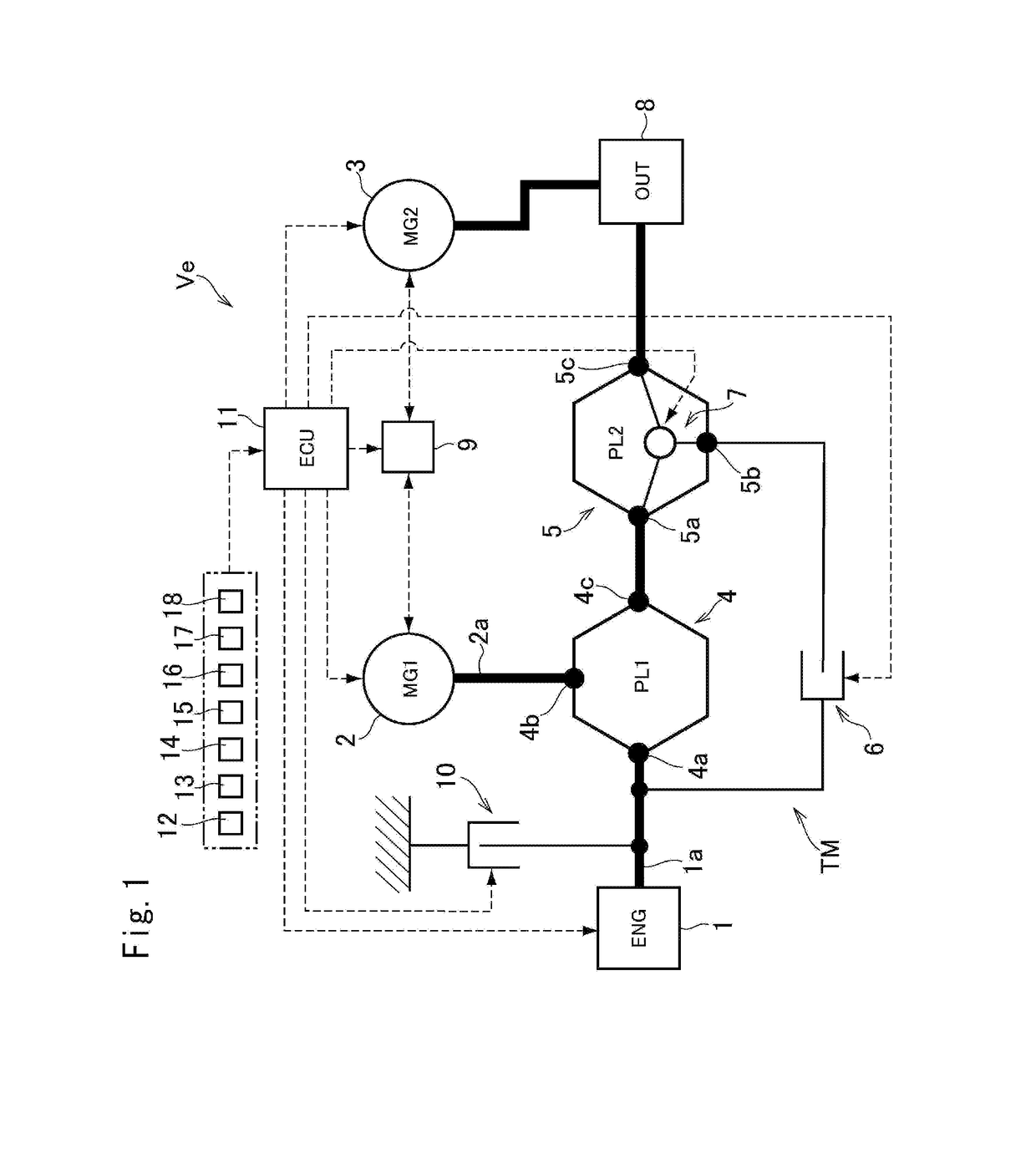Control system for hybrid vehicle
a control system and hybrid technology, applied in battery/cell propulsion, engine-driven generator propulsion, transportation and packaging, etc., can solve the problems of increasing electrical loss resulting from such power conversion, reducing energy efficiency of hybrid vehicles, and increasing electrical loss, so as to reduce losses
- Summary
- Abstract
- Description
- Claims
- Application Information
AI Technical Summary
Benefits of technology
Problems solved by technology
Method used
Image
Examples
Embodiment Construction
[0047]Preferred embodiments of the present application will now be explained with reference to the accompanying drawings. Referring now to FIG. 1, there is shown one example of a drive system of a hybrid vehicle to which the control system according to the present disclosure is applied. A prime mover of the vehicle Ve shown in FIG. 1 includes an engine (referred to as “ENG” in FIG. 1) 1, a first motor (referred to as “MG1” in FIG. 1) 2, and a second motor (referred to as “MG2” in FIG. 1) 3. A power train of the vehicle Ve includes a first planetary gear unit (referred to as “PL1” in FIG. 1) 4, a second planetary gear unit (referred to as “PL2” in FIG. 1) 5, a first engagement device 6, a second engagement device 7 and an output unit 8 (referred to as “OUT” in FIG. 1).
[0048]Power of the engine 1 is distributed to the first motor 2 side and to the output unit 8 side through the first planetary gear unit 4 serving as a power distribution device. The first motor 2 and the second motor 3...
PUM
 Login to View More
Login to View More Abstract
Description
Claims
Application Information
 Login to View More
Login to View More - R&D
- Intellectual Property
- Life Sciences
- Materials
- Tech Scout
- Unparalleled Data Quality
- Higher Quality Content
- 60% Fewer Hallucinations
Browse by: Latest US Patents, China's latest patents, Technical Efficacy Thesaurus, Application Domain, Technology Topic, Popular Technical Reports.
© 2025 PatSnap. All rights reserved.Legal|Privacy policy|Modern Slavery Act Transparency Statement|Sitemap|About US| Contact US: help@patsnap.com



